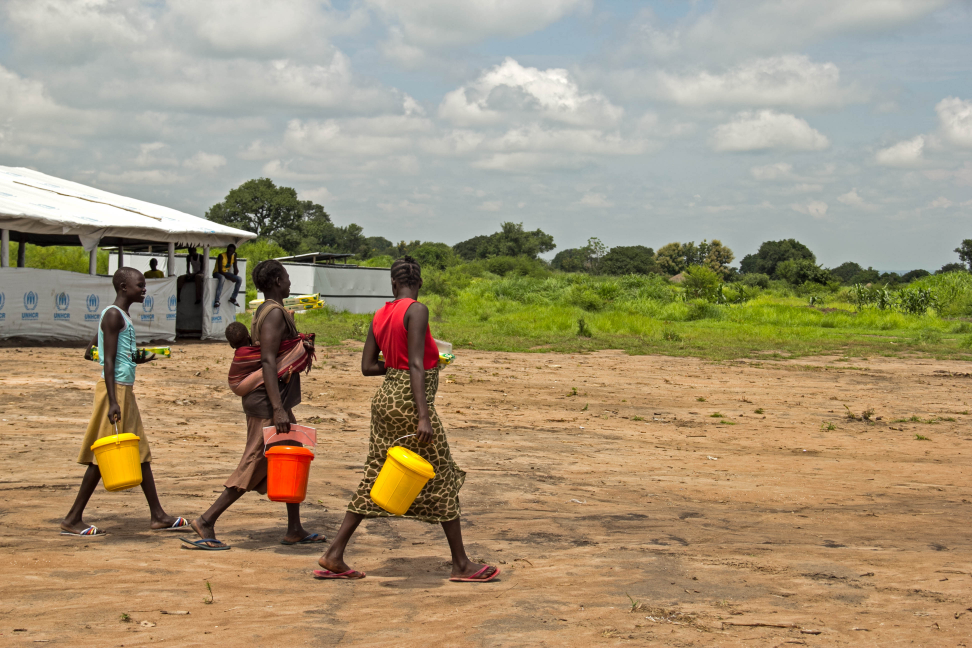Research Challenges - ‘Evaluating the multi-sectoral impacts of COVID-19’.

;
In the first of two blog posts I outline the experiences of our research teams in conducting the study on ‘Evaluating the multi-sectoral impacts of COVID-19’.
As a humanitarian researcher having worked on large scale multi-sector needs assessments (MSNA) in the past two years, I had experienced a few of the significant challenges faced by research teams in the field: from sample design and coverage, balancing competing priorities and information needs to daily logistical challenges, supervision of field teams, and rigorous data-cleaning – the process of collecting and analysing data to provide a reliable evidence-base that informs the humanitarian response is lengthy and demanding enough already without a global pandemic throwing a spanner in the works.
In early March 2020, in the space of a few weeks, country teams implementing the annual REACH MSNA, had to rapidly shift gears and adapt to a slew of new challenges. As a first priority, research teams had to adapt data-collection methods to ensure that sufficient preventive and hygiene measures were followed by field teams interviewing vulnerable populations – while still allowing for the timely collection of data. While certain country teams carried out data collection under stringent rules requiring the use of personal protective equipment and physical distancing, others switched to remote data collection techniques, where feasible, which consequently necessitated re-drawing sample frames, resorting to random digit dialling or snowballing approaches, and new data-checking and cleaning procedures.
As a second priority, REACH teams had to re-evaluate the number and type of indicators in the research design phase of the MSNA, which coincidentally occurred with the onset of COVID-19 in February-March 2020. As information needs of humanitarian actors changed, so did the MSNA research design, survey questionnaires, and data collection practices. There was a fine balance sought after between continuing the collection of core humanitarian indicators, which are comparable year after year, and new questions on knowledge, attitudes, and practice of preventive measures with respect to COVID-19. This was greatly limited not only by the length of the questionnaire, but also by the changes to data collection approaches: reducing face-to-face time of interviews, and limiting attrition of participants during remote phone-based interviews. Despite these challenges, and due to the resourceful and inventive efforts of the various REACH teams, all countries with MSNA cycles managed to collect data from thousands of households.
During the middle of the first year of the pandemic, concerns began to be raised not only about the impacts COVID-19 had on vulnerable communities, but also of the impacts of preventive measures and policies, which were enacted by governments to curb the spread of the virus. While questions and arguments anticipating the negative direct and indirect effects of containment and closure policies had been raised in academic, humanitarian, and journalistic spheres, there were limited efforts to synthesise and analyse cross-country findings on their impacts on multi-sector humanitarian needs. Fortunately, as most countries with MSNA cycles had collected data on knowledge, attitudes, and practices surrounding COVID-19, as well as a multitude of key indicators reflecting severity of needs, the data to support such an undertaking existed. The research partnership between IMPACT Initiatives and academic partners on ‘Evaluating the multi-sectoral impacts of COVID-19’ aimed to take the first steps in exploring the existing available data and fulfilling a largely unanswered humanitarian information need.
However, analysing context-specific data and synthesising findings across diverse crises, is in itself fraught with research challenges. Although the various country cases studied in the research project were all affected by the singular shock of the COVID-19 pandemic, the varied policy measures to contain Covid 19, made teasing out common themes or similar findings across diverse cases a challenging task. Nonetheless, the research report provides key insights into how vulnerability and resilience – already in pre-COVID-19 times – were, and continue to be, associated with demographic and socioeconomic factors, displacement status, delivery of humanitarian aid. The research also contains insight for humanitarian practitioners seeking to tailor their response as the research highlights the prevalence of adoption of preventive measures by different population sub-groups, as well as the associated factors that increased or decreased the likelihood of their adoption. Finally, using both 2019 and 2020 MSNA data-sets as well as other reputable data sources, the research evaluated how COVID-19 and its preventive policy measures impacted displaced and non-displaced populations in the areas of livelihoods, food security, water, sanitation and hygiene, shelter, education, protection, access to and use of healthcare services, and coordination among humanitarian actors.
The project has underscored the importance of academics and humanitarian practitioners sharing their respective expertise, with the former providing much needed methodological and analytical rigour, and the latter providing context-specific information and interpretation of findings. In a subsequent blog, I briefly summarise the main conclusions from the research project and its anticipated impact.
Stay updated
Sign up for our newsletter to receive regular updates on resources, news, and insights like this. Don’t miss out on important information that can help you stay informed and engaged.
Related articles
.png)

.png)
Explore Elrha
Learn more about our mission, the organisations we support, and the resources we provide to drive research and innovation in humanitarian response.